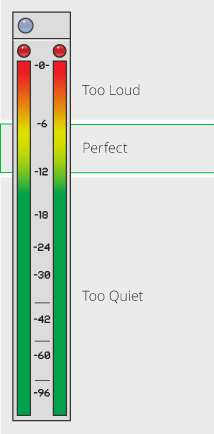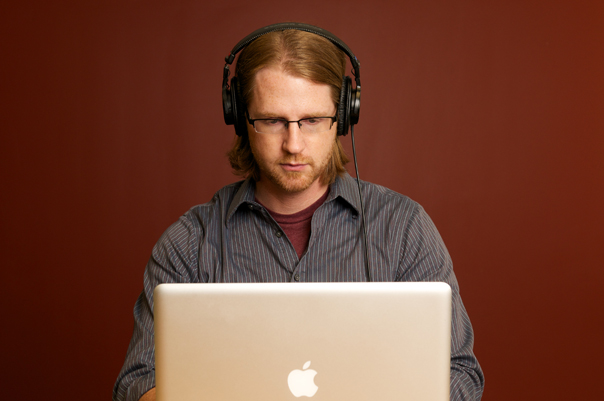Recording Clean Audio
Recording in a controlled environment is only half the job – to capture clean audio, you need to master your gear.
Audio meters
An audio meter visualizes the volume of a sound coming into into your computer or audio recorder. Audio meters usually use the ‘decibel’ measurement, abbreviated dB, to measure sound levels.
Sounds that exceed 0dB won’t be captured correctly by your recording device. Quieter audio sources should be turned up so they’re easier to see on the audio meter.

Peaking
If you try to push an audio signal that is too loud through your computer or audio recorder, your audio will “peak.” This happens because your computer or audio recorder is physically unable to capture the part of the audio that is too loud.
If your audio is peaking, try lowering your microphone’s input volume. If still peaking after lowering your input volume, perhaps when recording something very loud, try moving your microphone further from the audio source. If your audio is still peaking after trying both methods, you likely need to use a different microphone and recorder that can handle increased volumes.
Use headphones to monitor audio
If you’re recording by yourself, make sure you’re wearing headphones and listening to the audio coming into your computer. This can make it easier to identify volume and audio source problems before you record.
It can also help to have an assistant record and monitor your audio. This frees you up to focus on the delivery of your lines, and gives you a second opinion on your audio quality.

